Good morning-
It is so hard to tell from a picture. I think I would call and get an appointment with the vet- it could be something simple, but I would make sure. Best of luck.
Good morning Pawbly friends-
Having a sudden – very sudden- change in behavior in one of our GSDs. We are trying to think back to figure if there has been any change in routine that might cause this. It is strange- Rontu will start to give a high grumble or start to “talk” now when you approach him, or his bed or his bone or his food. This morning just now, he did that with Butch (one of our others) when he came to me to get a head scratch. We promptly put Rontu in a sit and then told him “bed” which he went to a did lie down. We are going back to square one training and positive reinforcement. My thinking is that this not nipped in the bud right away will lead to full blown food aggression and possession issues, which we do not want. Any other advice would be GREATLY appreciated. Thanks!!
Comments
My 12 1/2 year old miniature schnauzer has a bump on her face I discovered two days ago. The bump was originally pink and matted over by hair. She got a full hair cut about a month ago so the bump wasn’t there before that. We’ve been putting Neosporin on it and a liquid band aid but after cutting more hair from the wound which had scabs over it with the hair, it is red and still fully exposed with a black edge. Not sure what this could be. Is it life threatening or do I need to take her to the vet?
Comments
Our 2 year old Pitt mix recently suffered from a laceration to his front paw pad. We ended up bringing him into the ER for stitches, which he received. However, neither the vets or ourselves were able to get him in his cone of shame. For about 4 days we were able to deter him from interfering with his wound through careful monitoring and a sock with cayenne pepper placed over the bandage. Day # 5, however, is when things went to pieces. Sometime between lunch and when I get off work, he was able to get his bandage off and proceeded to gnaw at his stitches… We took him back to the ER last night, but given how he is with strangers (not good), we opted to forgo getting him sedated and re-stitched, and try to take care of him from home. He lets us change his bandage, but when I tried changing it this morning, some of the gauze had adhered to the wound. I’m afraid if I pull more of it off, I will make the wound worse, but I can’t imagine that leaving it on there is a good idea either. If we can avoid even more costly medical bills without jeopardizing his health, that would be great. That being said, I’m reaching out to the canine community for any advice available! Thanks for taking the time to read my post 🙂
Comments
Is it normal for a cat in heat to have abdominal swelling? My cat is 3 yrs old and we have been meaning to spay her, but she goes into heat so often it’s hard to find time to do it. She is currently in heat and has been for over a week, and last week she had shown asymmetrical swelling on the left and right of her belly. The next day it went down so I figured it was nothing serious and probably swelling from being in heat. Now it has been a week she is still in heat and her abdomen seems just ever so slightly fuller on the right and left and firm. She is crazy in heat and doesn’t show any signs of being sick, acting normal, eating drinking, playing and jumping.
Is it possible for a cat in extreme heat to cause extreme swelling of the ovaries to where they would be palpable? I’m worried it could be early signs of pyometra, or if this is normal with heat. Her cycles have gotten more intense and extreme, as well as longer and more often, which makes me think it could be possible her reproductive system is simply engorged with blood causing it to be palpable.
If that (the swelling) is not normal with heat then I’ll take her to the vet ASAP, but again she is not grossly distended, she just appears “full”. Also there is no chance of pregnancy. Thanks.
Comments
I recently purchased a “furminator” brush for my cat with medium long hair so that I can brush her daily to help cut down on her hair balls. The brush works great! So, I am working on brushing daily and have purchased over the counter hair all control dry cat food to use with basic wet food. What is my next step if she is still vomiting Hair balls once in a while? Thanks!







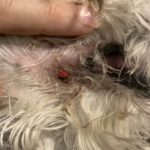



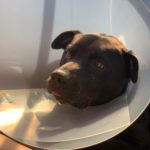








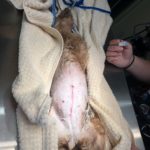
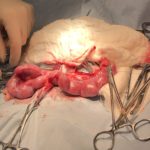
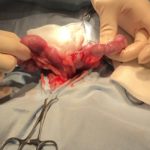
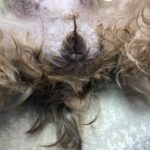



Yep, that’s the start of resource guarding. Is he the newest member of your pack?
Hi Laura-
I was hoping you would respond. Thank you!! He is the newest member, but he’s not that new. That’s what makes it strange. We’ve had him over a year now. I will admit that it has been a difficult year of adjustment at times. We have 3- all rescues. Our oldest is almost 14 and he has different needs obviously. He is an alpha- was the alpha of our old pack. He is all that’s left of that pack. When we rescued Riva, she fell into line perfectly with him. She’s you g- about 3 I think. That is part of the reason we rescued Rontu- she wanted to play hard and Butch just can’t at his age and in his condition. He tries though???? Anyway- I am sure that Butch being a senior citizen and having modified dog rules is confusing to the rest of my pack- but it has to be. So as pack leader I am just like, this is how it is, period. Which seemed to have been fine up until the other day. This is long- sorry. Now we did just have a huge power struggle between Rontu and Riva. Dr. Mags was a saint and had me rush her into Dr. Ahrens at Jarrettsville Vet and she was stitched up and put on antibiotics within the hour. I love Jarrettsville???????? My thinking is that some change in the dynamic is happening for whatever reason. I’m just trying to put my finger on it to avoid any long lasting bad habits/behaviors. So we are square one back to basics training with Rontu AND Riva. Any other thoughts you could share? Much appreciated????
I wouldn’t consider it that strange. Some dogs take a lot longer to settle in, and once that happens the weird behavior comes out.
Honestly…feeding separately and only allowing them to have low value toys may be the way to go for now. I’d also look into NILF – he’s guarding you, as well as other stuff, and that’s NOT acceptable.
NILF? I have not come across that term before. I will research that. Thank you????
Nothing in life is free. Got it. We say earn your keep. I had realized that was an actual acronym. No- all three dogs have to “ask permission” for things. I will start adding my personal attention to that equation now that you have brought it to light. But yes, doors here do not open until a nice sit is displayed. Food is not served until a sit, paw and kiss are given. Carpet is off limits…. although just about 15 minutes ago, Rontu was casually laying in the carpeted floor in the office…. it seems like he is trying to become “the boss”. So we will have to have a family meeting this evening about making him work a little harder for his privileges I suppose.
Yes, sorry, I had to run for the day yesterday – NILF is Nothing In Life Is Free, and in his case, it sounds like he needs to be reminded of the rules. You’ve got your pack well in hand, I’m certain you’ll get this sorted as well. 🙂